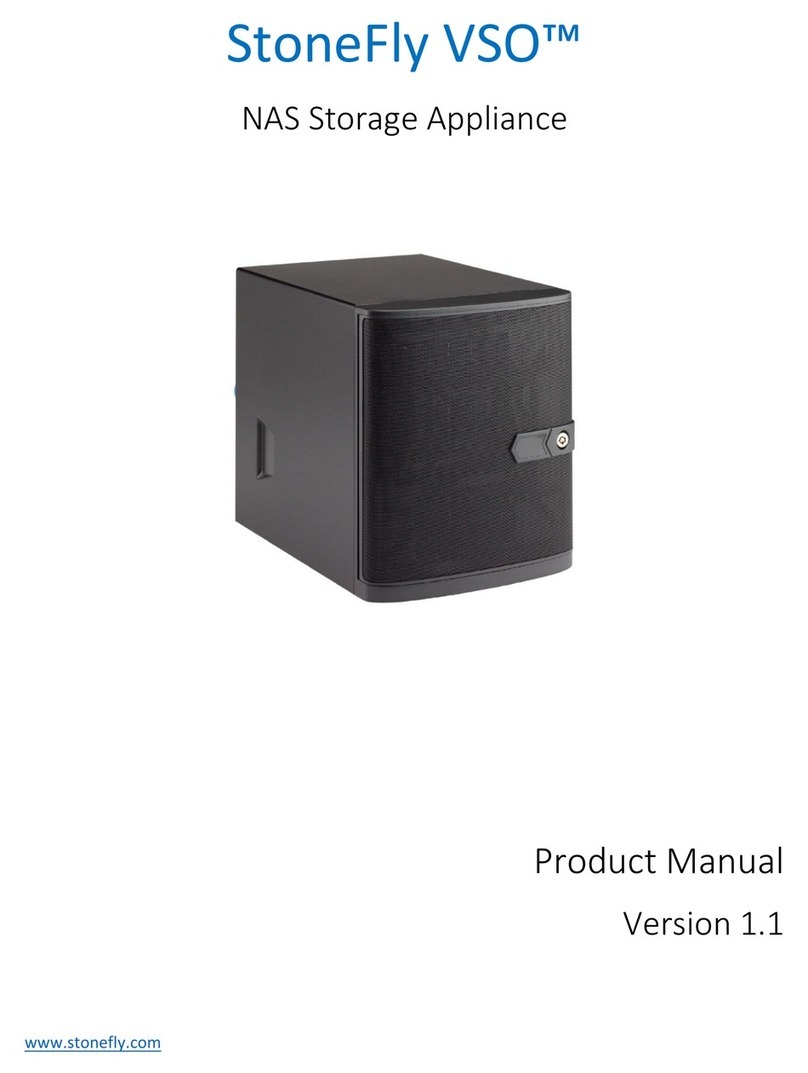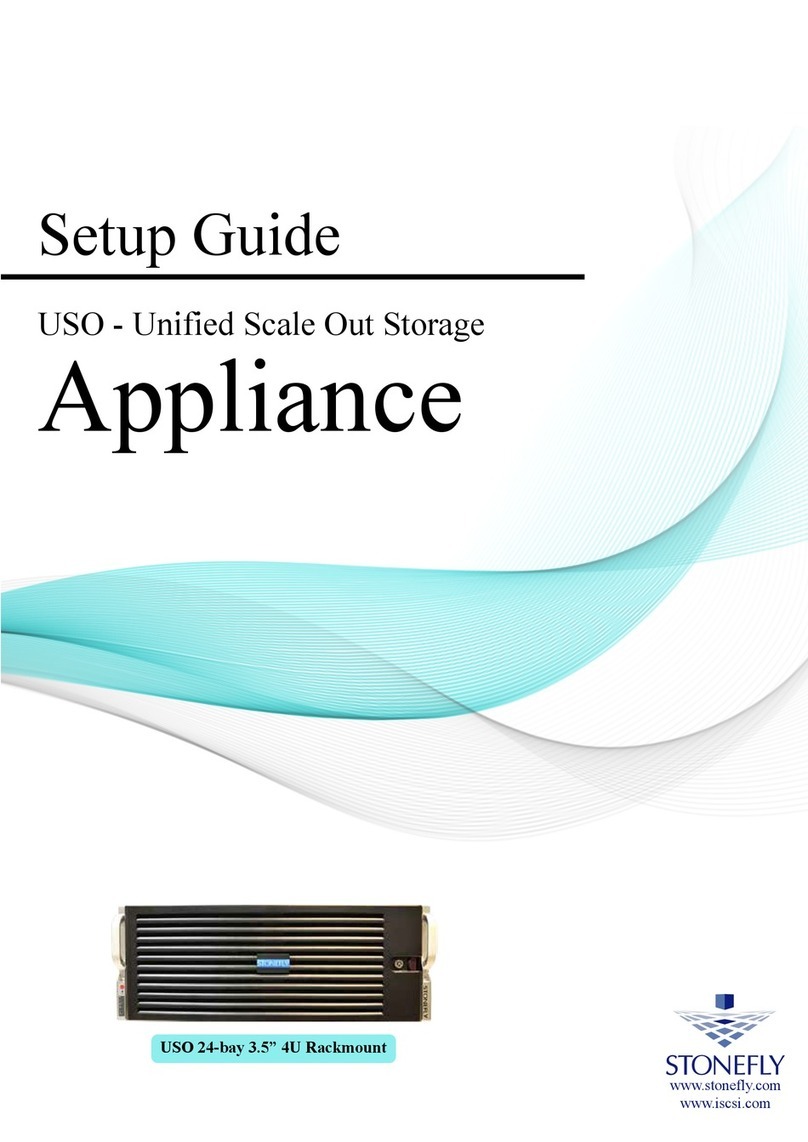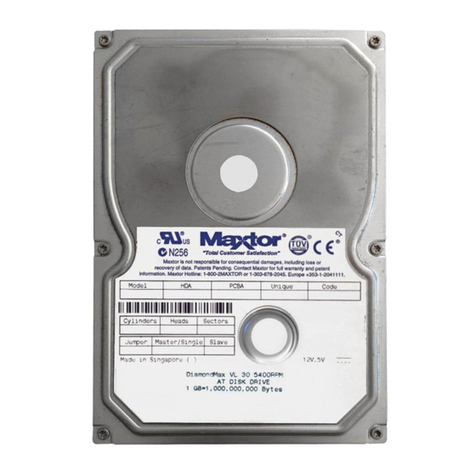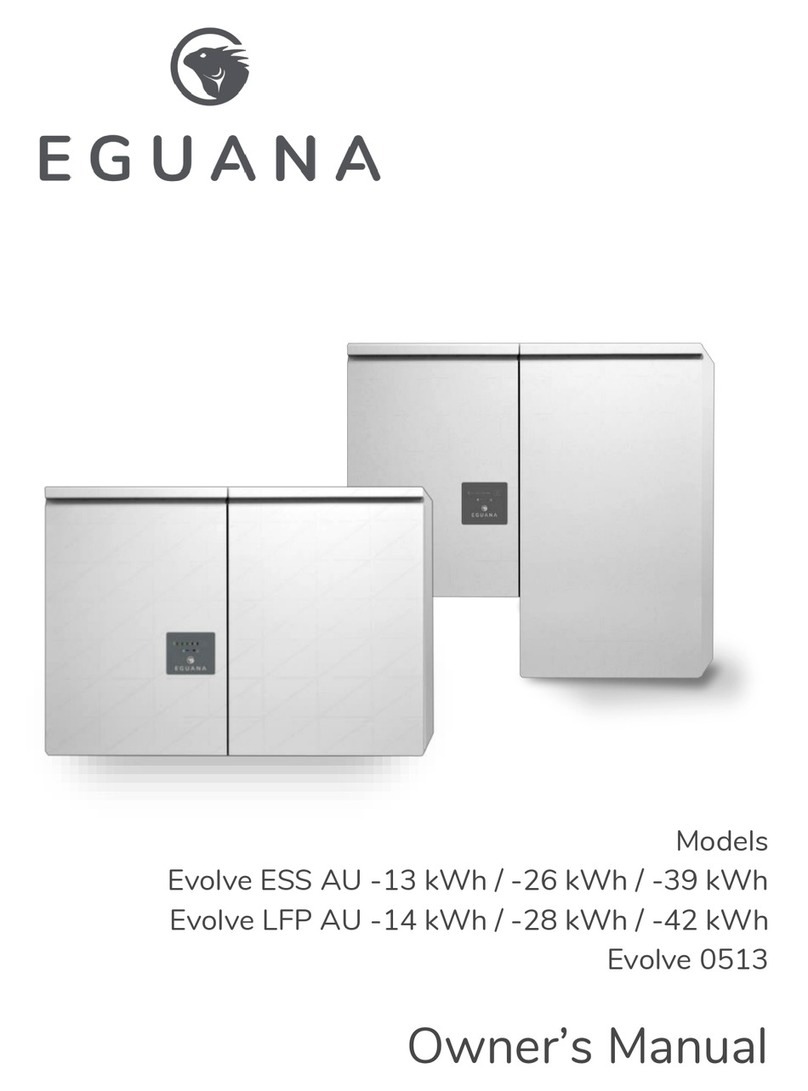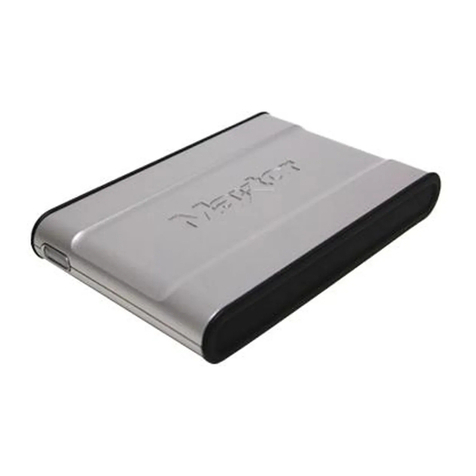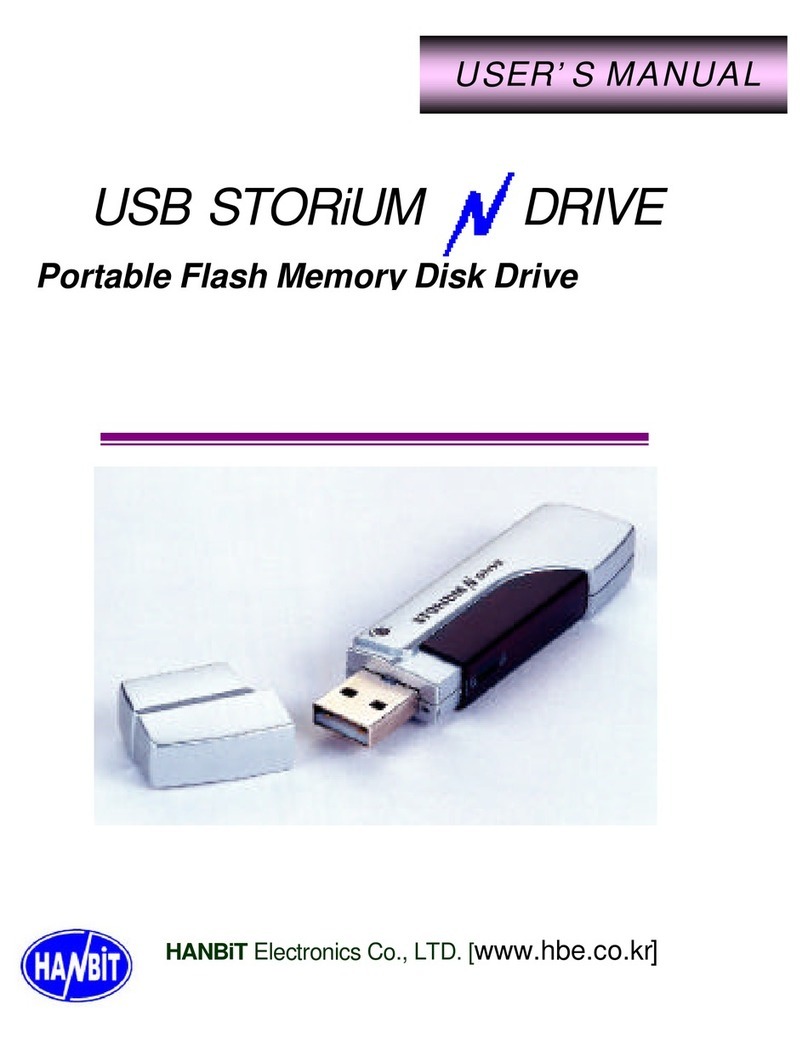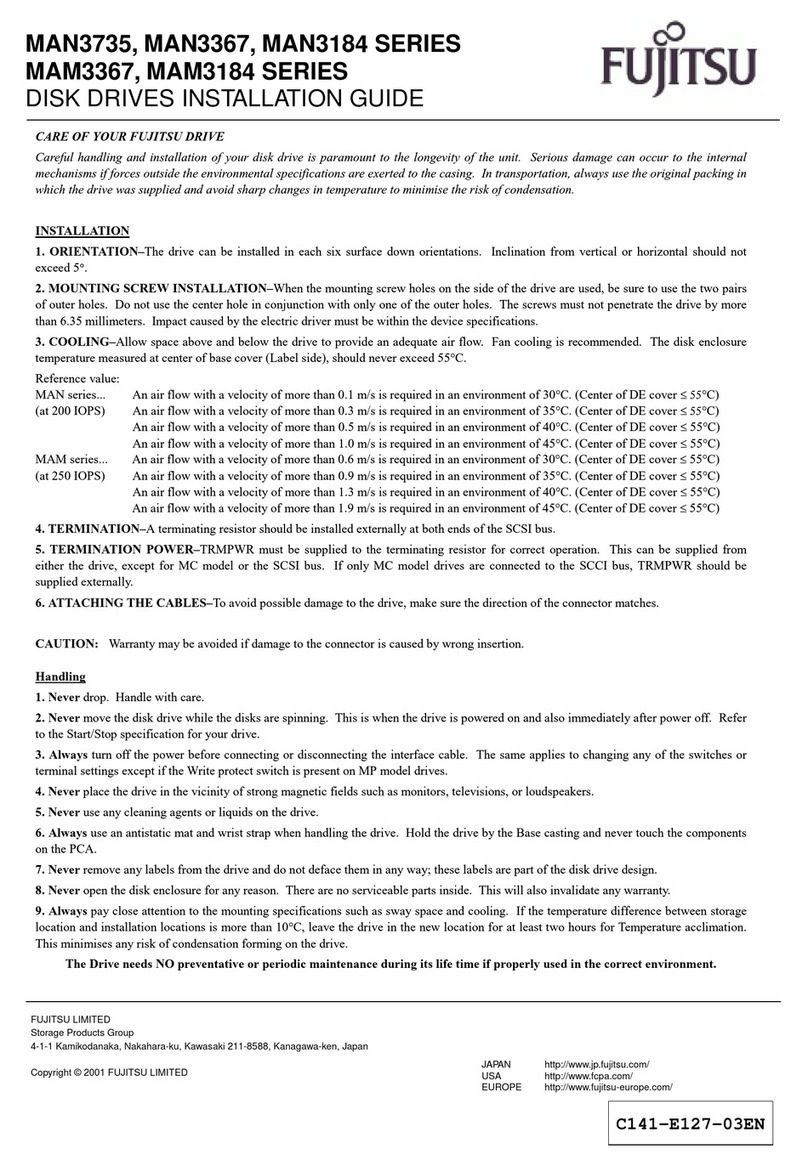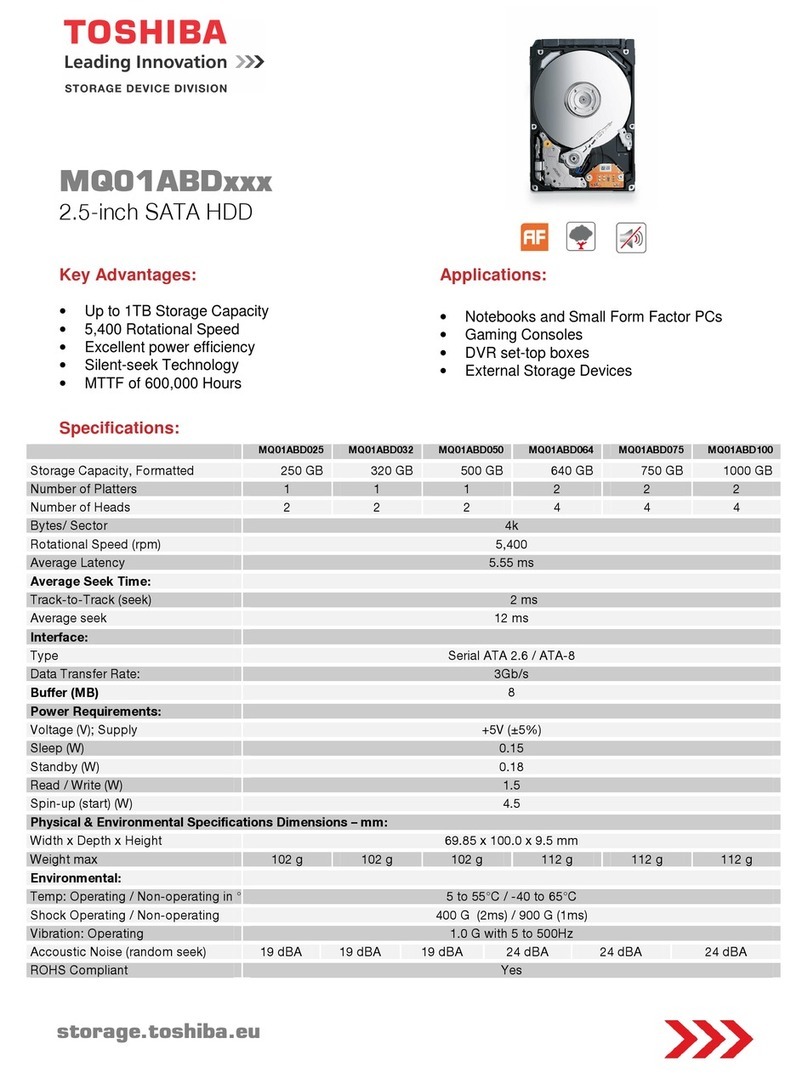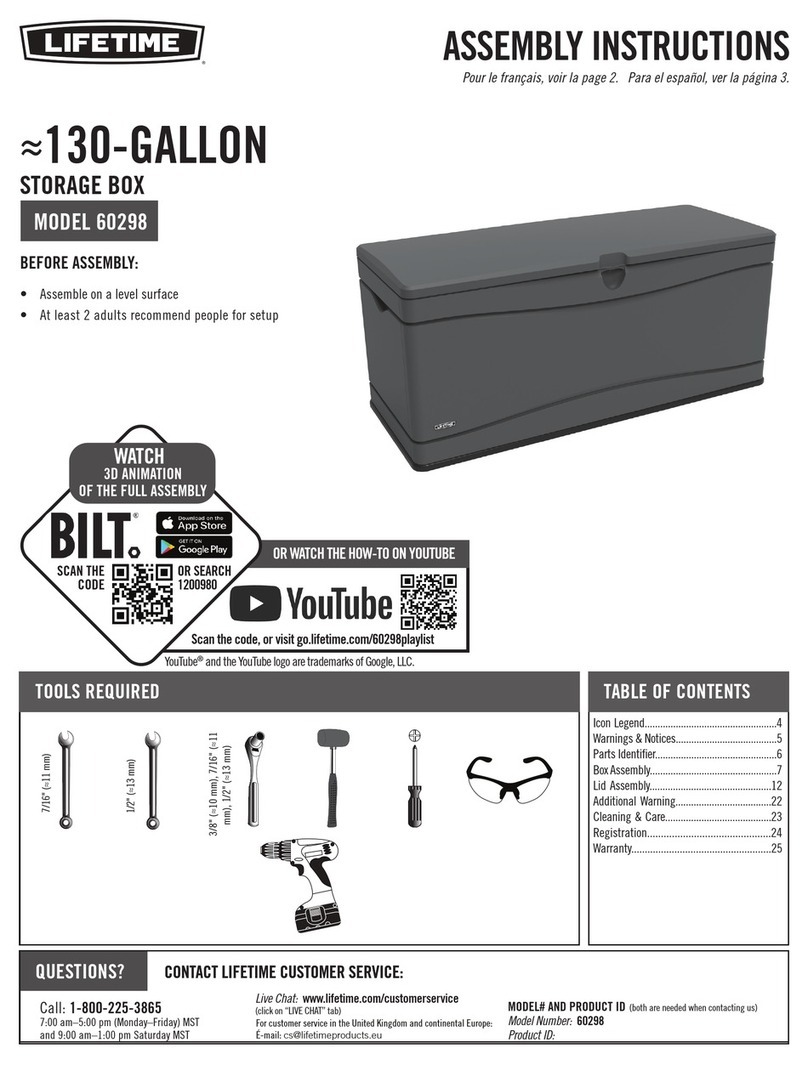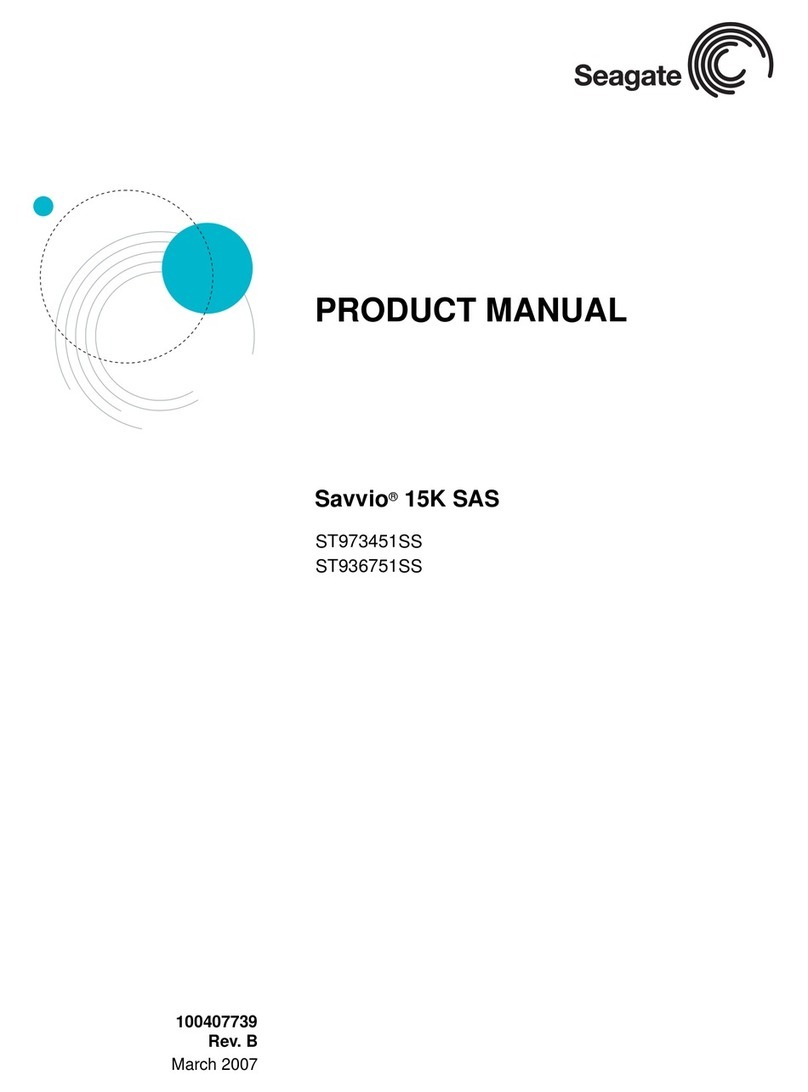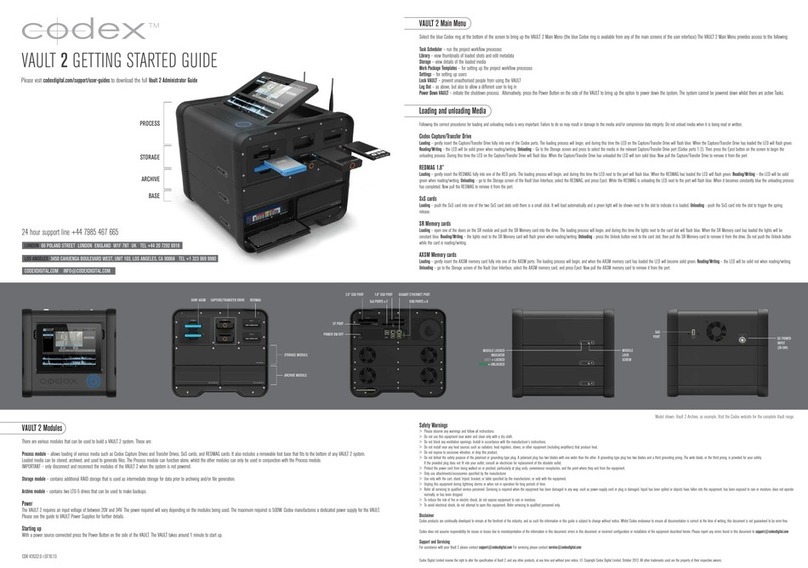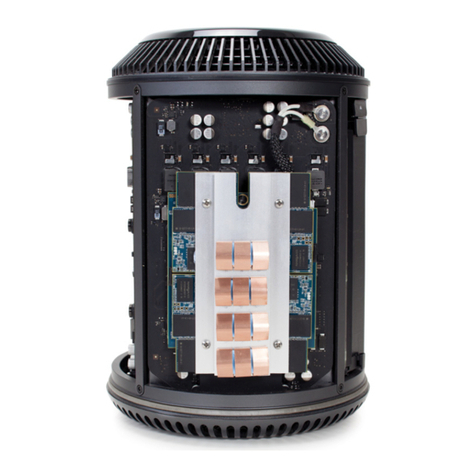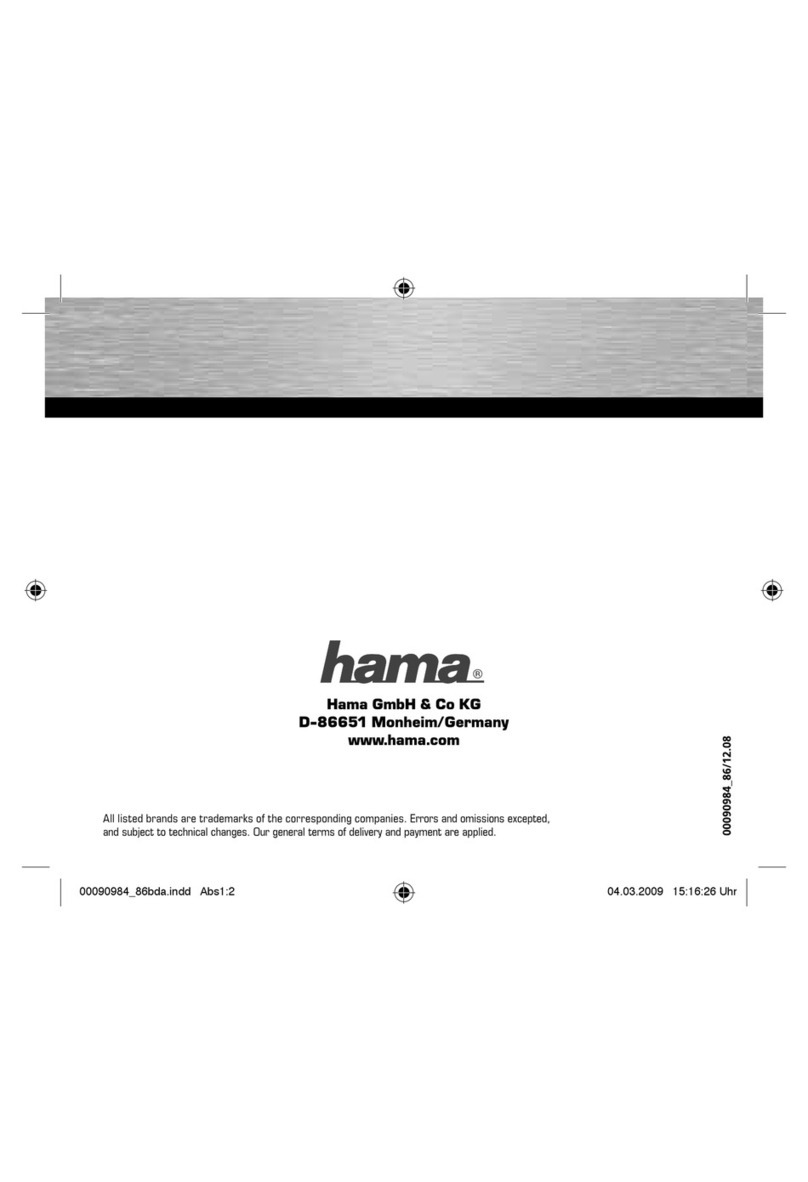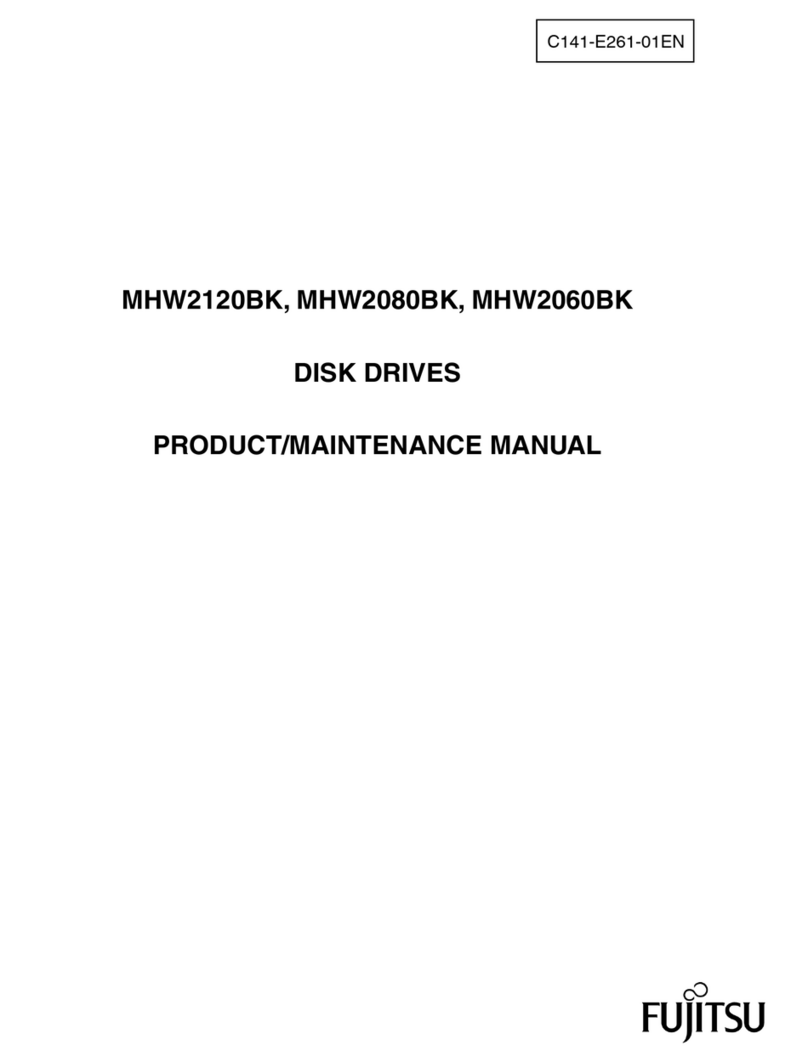STONEFLY VSO-40T-V2 User manual

Setup Guide
Value Scale Out (VSO)
Storage
Appliance
www.stonefly.com
www.iscsi.com
6-bay 2U 3.5” Rackmount

This Page is intentionally left blank.

Copyright 2006, 2007, 2008, 2009, 2010, 2011, 2012, 2013, 2014, 2015, 2016, 2017,
2018 StoneFly, Inc.
All rights are reserved. No part of this document may be photocopied or reproduced without
the prior written consent of StoneFly.
The information contained in this document is subject to change without notice. StoneFly
shall not be liable for errors contained herein or for consequential damages in connection
with the furnishing, performance, or use of this material.
StoneFly, the StoneFly logo, Storage Concentrator, Integrated Storage Concentrator, ISC,
Modular Storage Concentrator, StoneFly Backup Advantage, StoneFusion, StoneFly
Replicator CDP, ValueSAN, Unified Scale Out, USO, Twin Scale Out, TSO, Unified Storage
& Server, USS, Unified Deduplicated Storage, UDS, Unified Encrypted Storage, UES,
OptiSAN, StoneFly Voyager, StoneFly Mirroring, Storage Concentrator Virtual Machine,
SCVM, Software-Defined Unified Storage and SDUS are property of StoneFly, Inc., a
wholly owned subsidiary of Dynamic Network Factory, Inc.
Other brands and their products are trademarks or registered trademarks of their respective
holders.
Last update Date: 12/2019

StoneFly VSO Appliance Setup Guide
V8.0.3x
© StoneFly, Inc. 2018
Page IV
Table of Contents
Chapter 1 Introduction ...............................................................................................................................................6
Introduction ..................................................................................................................................................7
1.1.1 Other Resources ..................................................................................................................................7
Conventions .................................................................................................................................................8
1.2.1 Icons ....................................................................................................................................................8
Chapter 2 Overview.....................................................................................................................................................9
Product Overview.......................................................................................................................................10
2.1.1 VSO Features and Benefits ...............................................................................................................11
Theory of Operation ...................................................................................................................................13
2.2.1 iSCSI Overview.................................................................................................................................13
2.2.2 IP SAN Configuration Overview ......................................................................................................13
2.2.3 Network Attached Storage (NAS) .....................................................................................................13
2.2.4 iSCSI Host Initiators..........................................................................................................................13
2.2.5 Back-End Storage..............................................................................................................................14
Installation..................................................................................................................................................14
2.3.1 Requirements.....................................................................................................................................14
2.3.2 Setting Up a Simple IP SAN Using an VSO .....................................................................................14
Safety Information .....................................................................................................................................16
2.4.1 Environmental ...................................................................................................................................16
2.4.2 Compliance........................................................................................................................................16
Product Registration...................................................................................................................................16
Contacting StoneFly for Help.....................................................................................................................17
Chapter 3 Initial Installation ....................................................................................................................................18
Setting Up the VSO....................................................................................................................................19
3.1.1 Unpacking .........................................................................................................................................19
3.1.2 Mounting Equipment.........................................................................................................................19
3.1.3 Cabling the Storage System...............................................................................................................26
3.1.4 Configuring the Network Settings for the IPMI KVM......................................................................26
3.1.5 Configuring the Network Settings for the VSO Management Port ...................................................31
3.1.6 Initial Configuration of the StoneFly VSO Appliance ......................................................................33
3.1.7 Setting up Routing.............................................................................................................................39

StoneFly VSO Appliance Setup Guide
V8.0.3x
© StoneFly, Inc. 2018
Page V
3.1.8 Confirming Setup ..............................................................................................................................40
3.1.9 Steps to Complete Before Setting Up the System .............................................................................40
3.1.10 Attaching and Removing the Front Bezel .........................................................................................41
Chapter 4 Troubleshooting .......................................................................................................................................42
Appendix 1: Glossary ................................................................................................................................................46

StoneFly VSO Appliance Setup Guide
Introduction
Chapter-1: Introduction

StoneFly VSO Appliance Setup Guide
V8.0.3x
© StoneFly, Inc. | All rights reserved
Page 7
Introduction
1.1 Introduction
This guide provides the information needed to perform the out-of-the-box setup and
configuration tasks for the StoneFly VSO storage appliance.
After completing the steps in this guide, proceed to the Storage Concentrator User’s Guide.
Refer to “Chapter 2 – Administrative Interface” for information on how to efficiently and
effectively manage data storage, data protection, and data delivery on your network.
This setup guide is intended to be used by network administrators and assumes a basic
understanding of:
Local Area Networks (LAN)
Ethernet and Ethernet-switching concepts
Network Attached Storage (NAS)
1.1.1 Other Resources
Other useful information regarding the setup and use of your VSO can be found in the
following places:
StoneFly Storage Concentrator User’s Guide
The StoneFly Web site: www.stonefly.com
The VSO Online Help in the administrative interface (following initial setup)

StoneFly VSO Appliance Setup Guide
V8.0.3x
© StoneFly, Inc. | All rights reserved
Page 8
Introduction
1.2 Conventions
The following table lists the conventions used throughout this Guide.
1.2.1 Icons
Icon
Type
Description
Note
Special instructions or information
Warning
Risk of system damage or a loss of data

StoneFly VSO Appliance Setup Guide
Overview
Chapter-2: Overview

StoneFly VSO Appliance Setup Guide
V8.0.3x
© StoneFly, Inc. | All rights reserved
Page 10
Overview
2.1. Product Overview
Based on the StoneFusion operating system, the VSO™ delivers target volumes to hosts
over TCP connections in an Ethernet network. VSO™ also offers Network Attached Storage
(NAS) which allows multiple hosts/users share files.
Configuring and managing the VSO™ is accomplished using a browser-based graphical
user interface (GUI) resident in the VSO™. Storage resources are connected to the VSO™
through either internal drives or coming from one or more expansion boxes connected to the
external SAS port (4, 6, 12 16, and 24-bay VSO appliances only). The system administrator
uses the GUI to allocate blocks of storage to create the iSCSI target volumes and authorizes
their use by individual host systems.
Figure 1: VSO 6-bay Model (without bezel)
Following is a list of the available VSO NAS appliance models:
Appliance Models
Form Factors | Drive Bays
Supported Storage Drives
VSO-40T-V2
Mini Tower | 4 x 3.5”
6Gb SATA drives:
-7200 RPM
VSO-60R-V2
2U | 6 x 3.5”
VSO-80R-V2
2U | 8 x 3.5”
12Gb SAS drives:
-7200 RPM
-10,000 RPM
-15,000 RPM
SSD (1x, 3x, 10x DWPD)
VSO-120R-V2 2U | 12 x 3.5”
VSO-160R-V2
3U | 16 x 3.5”
VSO-240R-V2
4U | 24 x 3.5”
The VSO comes pre-configured in multiple RAID sets with hot spare drives. To
change the RAID configuration settings you must use the RAID configuration
utility for VSO. Please consult the RAID Controller Manual included on the
documents CD.
The VSO features a management port, one or two dual-port Gigabit Ethernet (GbE) cards
for data I/O, and a SAS Raid HBA that drives internal drives and also has an external
port for connection to expansion boxes.

StoneFly VSO Appliance Setup Guide
V8.0.3x
© StoneFly, Inc. | All rights reserved
Page 11
Overview
2.1.1 VSO Features and Benefits
The following table details additional features of the VSO.
Feature Benefits
IP network-based SAN intelligence
based on StoneFusion OS
Less expensive to install and operate
Universal connectivity on IP networks
Uses existing network
No retraining of personnel on new
technologies
Lowers total cost of ownership
No distance limitations for IP networks
Storage Provisioning
Add, delete, or expand volumes easily
Maximizes utilization of storage resources
Responds to changes quickly
Mirroring
Supports both local and remote, synchronous
and asynchronous mirroring with StoneFly
Reflection™ and StoneFly Replicator® CDP
software
Disk-to-Disk backup
Simultaneous backup streams from multiple
servers for faster, more reliable backups
Nearly instantaneous restores from disk
HTML-based GUI management
Centralized storage management, control and
monitoring of provisioned storage pools
Access and administer changes from a
browser anywhere at anytime
Secure access (https)
Easy and intuitive to use
Security Access Control Lists designate which storage
resources are accessible to which hosts and
specify read/write, read only, or no access
privileges
CHAP (Challenge Handshake Authentication
Protocol) supports passwords at the host or
volume level
Expandable storage capacity with
additional storage resources
(optional)
Works with SAS JBODs containing SATA
or SAS drives.

StoneFly VSO Appliance Setup Guide
V8.0.3x
© StoneFly, Inc. | All rights reserved
Page 12
Overview
High availability
Access local and remote copies of user
configuration data
Object storage resources Integrated cloud connection to Microsoft
Azure Blob Storage, Amazon AWS S3 and/or
compatible AWS S3 storage

StoneFly VSO Appliance Setup Guide
V8.0.3x
© StoneFly, Inc. | All rights reserved
Page 13
Overview
2.2. Theory of Operation
The StoneFly VSO™ is the mediator between hosts and storage devices in an IP network. IP-
based Storage Area Networks (IP SANs) use the iSCSI protocol over an Ethernet and
TCP/IP network. VSO offers Network Attached Storage (NAS), which allows multiple
host/users share files over an Ethernet network. Each server, host, or user that needs access
to the SAN storage devices must implement the iSCSI protocol over an Ethernet and TCP/IP
network.
2.2.1 Network Attached Storage (NAS)
Network Attached Storage (NAS) is a storage technology that allows users to create shared
volumes that can be accessed by one or more users. The difference between iSCSI volumes
and NAS volumes are that NAS volumes (NAS shares) can be accessed by more than one
user/server, but iSCSI volumes in general can only be accessed by one server.
2.2.2 Back-End Storage
One of the major benefits of the VSO appliance is the ability to expand using optional back-
end storage. Back-end storage can use SAS JBODs (Just a Bunch of Disks) that can house
SATA or SAS drives. The storage devices connect directly to the back of the VSO SAS port.
The VSO mediates requests from host servers for storage resources, just as servers mediate
storage requests from end-user clients on the network. Therefore, it is prudent to set up the
VSO on a dedicated Gigabit Ethernet storage network that is operating independently of the
LAN that mediates traffic between clients and hosts.
It is recommended that you setup a dedicated subnet running on a 10/100/1000 network to
prevent management of the NAS from interfering with data I/O traffic.
2.3 Installation
2.3.1. Requirements
The following minimum network system requirements must be met before attempting to
install the VSO:
1. Connectivity to an Ethernet network (10/100/1000)
2. Storage resources (devices) are either internal drives or coming from
expansion box(es) connected to an external SAS port
3. Computer must have one of the following browsers:
A. FireFox 1.0 or later or Netscape 4.7 or later (Windows PC or Linux)
B. Internet Explorer 5.0 or later (Windows PC only)

StoneFly VSO Appliance Setup Guide
V8.0.3x
© StoneFly, Inc. | All rights reserved
Page 14
Overview
2.3.2. Setting Up a Simple IP NAS Using an VSO
To set up a simple IP SAN using a VSO, use the steps that follow:
1. Connect your SAS JBOD storage (if you have any) to the back of the VSO
(optional).
2. Install the VSO using the steps that follow:
A. Connect the VSO to the switch. If you are using the multi-port GbE
connections, you can plug in all or some of the connections. Only by
plugging in more than one connection will you have automatic
Adaptive Load Balancing.
B. Connect the VSO to power using the power cord connection.
3. Connect a laptop or other local computer to the Management port using a cross-
over cable either directly or through an Ethernet switch.
4. Set up the IP network so that the Management port is on a different subnet than
the main network.
5. Configure the VSO and provision your storage volumes.
6. Install iSCSI initiators composed of either iSCSI adapter cards or iSCSI HBAs
into the servers or use iSCSI software initiators for standard network interface
cards (NICs) installed in the servers.
7. Connect the servers to the Gigabit Ethernet switch.
8. Set up the initiators on the servers to recognize the provisioned storage volumes
and configure security settings.

StoneFly VSO Appliance Setup Guide
V8.0.3x
© StoneFly, Inc. | All rights reserved
Page 15
Overview
Figure 2: A Typical Configuration of VSO
VSO NAS and VSO SAN require different licenses. VSO NAS
does not have iSCSI by default. iSCSI protocol needs the SAN
license.
For more information about licenses, contact StoneFly support.

StoneFly VSO Appliance Setup Guide
V8.0.3x
© StoneFly, Inc. | All rights reserved
Page 16
Overview
2.4 Safety Information
Please review the following safety information completely before installing your VSO.
2.4.1 Environmental
Requirements for power and network availability must be taken into consideration when
planning where to place your VSO. The space should have well regulated temperature and
humidity and should be relatively free of dust and other contaminants. The list below
provides specifics on the environmental requirements:
1. Operating temperature: +50 F to +95 F (10 C to 35 C).
2. Altitude: -50 to 10,000 feet (-16 to 3048 meters).
3. Relative humidity: 8% to 80% (non-condensing).
2.4.2 Compliance
FCC 47 CFR Part 15, Class
A CSA C1088, Class A
UL 60950; CUL 60950
CE Mark (EN 455022, Class A/EN 455024)
2.5 Product Registration
To initiate StoneFly customer service for your product, you must first register your VSO. Go
to the StoneFly web site at https://stonefly.com/support or mail in the registration card that
was included with your VSO.
Please have the following information available when registering your VSO:
Model Number:
Serial Number: D500_ _ __

StoneFly VSO Appliance Setup Guide
V8.0.3x
© StoneFly, Inc. | All rights reserved
Page 17
Overview
2.6 Contacting StoneFly for Help
Please have the following information available when contacting StoneFly technical support
for assistance:
Model Number:
Serial Number: D500_ _ _ _
Software Version:
Initiators:
Storage:
Storage Serial Number(s):
To contact StoneFly, call 510.265.1616 and select support from the menu or go to the
StoneFly support page at https://www.stonefly.com/support and fill out the contact form.

StoneFly VSO Appliance Setup Guide
Initial Installation
Chapter-3: Initial Installation

StoneFly VSO Appliance Setup Guide
V8.0.3x
© StoneFly, Inc. | All rights reserved
Page 19
Initial Installation
3.1 Setting Up the VSO
This section will provide step-by-step instructions for initial system configuration and
hardware setup of the VSO.
3.1.1 Unpacking
Unpack the hardware from the box. You will find:
1. The VSO Appliance
2. The front bezel for the VSO
3. Power cords
4. A product registration card for the VSO
5. A documentation CD with the StoneFly Storage Concentrator User’s Guide
and all other documentation
6. A StoneFusion Operating System CD for system recovery
3.1.2 Mounting Equipment
Mounting rails for the VSO are included in the package. One set of rails is required for rack
mounting each VSO.
This section is written for 2U VSO, but other VSO rack installations are similar.
This guide provides information on installing the StoneFly VSO chassis into a rack unit with
the rails provided. There are a variety of rack/cabinet units on the market, which may mean
the assembly procedure will differ slightly. You should also refer to the installation
instructions that came with the rack unit you are using.
NOTE: This rail will fit a rack/cabinet between 28" and 33" deep.
Identifying the Sections of the Rack Rails
The StoneFly VSO chassis package includes two rack rail assemblies in the rack mounting kit.
Each assembly consists of three sections: an inner rail that secures directly to the chassis, an
outer rail that secures to the rack, and a middle rail which extends from the outer rail. These
assemblies are specifically designed for the left and right side of the chassis.

StoneFly VSO Appliance Setup Guide
V8.0.3x
© StoneFly, Inc. | All rights reserved
Page 20
Initial Installation
Figure 1:Identifying the Outer Rail, Middle Rail and Inner Rail
Releasing the Inner Rail
Each inner rail has a locking latch. This latch prevents the server from coming completely out
of the rack when the chassis is pulled out for servicing. To mount the rail onto the chassis,
first release the inner rail from the outer rails.
Releasing the Inner Rail from the Outer Rails:
1.
Pull the inner rail out of the outer rail until it is fully extended as illustrated below.
2.
Press the locking tab down to release the inner rail.
3.
Pull the inner rail all the way out.
4.
Repeat for the other outer rail.
This manual suits for next models
6
Table of contents
Other STONEFLY Storage manuals




